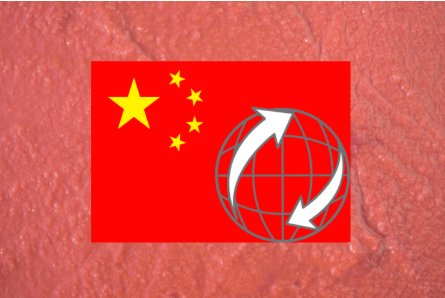Chinese exports in the third quarter of 2025 were 9% lower than in the same quarter of 2024; not all destinations are affected equally; the most significant decline concerns the imports to the Western EU, particularly a significant decline in Italian imports.
In the third quarter of 2025 (2025Q3, July-September), Chinese exports of tomato paste (HS codes 20029019, 20029011 and 20029090) amounted to 259,200 tonnes (t) of finished products; these quantities are nearly 38,000 t (-13%) lower than those of the previous quarter (2025Q2: April-June 2025) and 24,160 t (-9%) lower than those of the equivalent quarter in 2024 (2024Q3).
This decline is the third consecutive drop in Chinese export sales recorded in 2025, which aligns with the observations made during the recent Tomato Day (ANUGA, October 2025) and confirms the slowdown identified in our previous commentary on the fourth quarter 2024 results; the last increase, which occurred precisely during this period (2024Q4), had mobilized nearly 329,000 t of products and brought the result for the calendar year 2024 to nearly 1.196 million t, while remaining nevertheless lower than those of the previous quarter (2023Q4, 375,000 t). Over the twelve-month period ending in the third quarter of 2025, Chinese exports of tomato paste totaled 1.19 million tonnes.
The decline between the third quarters of 2024 and 2025 did not affect all markets equally: for the Middle East—which experienced spectacular growth with the explosion of sales to Iraq and Saudi Arabia in the fourth quarter of 2022—the third quarter of 2025 (60,800 tonnes) was equivalent, within a few dozen tonnes, to the third quarter of 2024 (61,000 tonnes). However, this result masks significant annual declines in the Iraqi, Omani, and Yemeni markets, offset by equally notable increases in the Emirates, Saudi Arabia, and Israel.
Similarly, the variations between the third quarters of 2024 and 2025 in South America (-429 t) remain minimal and reflect more the irregularity of flows to these destinations (Argentina, Brazil, Chile) than an underlying trend.
Two notable declines in the Russian and especially Kazakh markets (-2,400 t, -38%) marked Chinese activity towards Eurasia, which decreased between 2024Q3 and 2025Q3 by 3,300 t and 11%.
Over the period under review, Chinese exports fell by nearly 8,500 t to West African markets, following the decline in purchases from Nigeria, Ghana, the Democratic Republic of the Congo, Niger, etc., which were only partially offset by increases in imports from Togo, Benin, and Sierra Leone.
The most significant decline was recorded for Western EU destinations, with a total drop of nearly 26,000 t (-67%), largely contributed by declines in purchases from Italy (-23,400 t, -76%), Portugal (no deliveries since the end of 2024), Ireland, Sweden, and the Netherlands.
This trend is indeed not uniform, and several regions recorded more or less significant increases in quantities supplied: between the third quarters of 2024 and 2025, this was the case in Central America (+1,100 t), non-EU European countries (+1,340 t), East Africa (+1,600 t), and, most significantly, in the Eastern EU (+3,850 t) and the Far East (+4,030 t).
Significant increases in Chinese tomato paste imports were indeed recorded in Croatia, the Czech Republic, and Poland, to name just the most notable; however, they decreased slightly in Latvia, Lithuania, Hungary, and Romania.
In the Far East, increases in imports from the Philippines, South Korea, Malaysia, and other countries outweighed declines in Thailand and Indonesia, to name just the most significant.
Post time: Nov-12-2025





